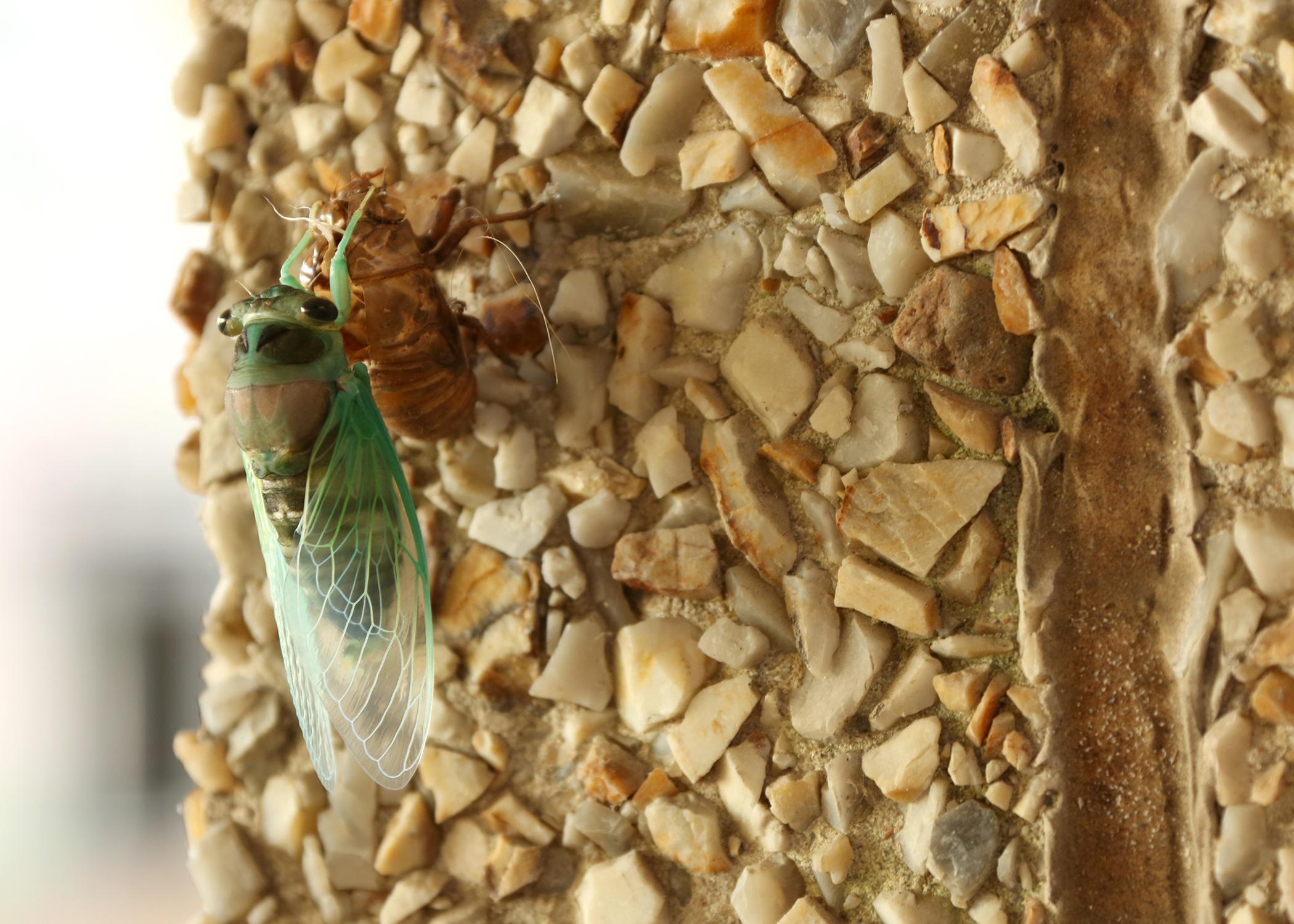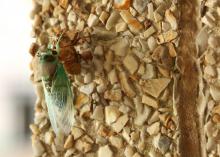Information Possibly Outdated
The information presented on this page was originally released on December 21, 2015. It may not be outdated, but please search our site for more current information. If you plan to quote or reference this information in a publication, please check with the Extension specialist or author before proceeding.
Life cycles are long, mysterious for cicadas
STARKVILLE, Miss. -- While many humans anticipate making certain changes with the arrival of a new year, certain insects have much different life cycles.
Periodical cicadas may anticipate emerging from the ground in 2016, while others may simply have to wait a few more years to see the light of day.
Cicadas are curious creatures. From beady eyes on the sides of their heads to prominent veins stretching across their glassy wings, they seem to be created from the Twilight Zone. Yet, they produce one the most common sounds of summer.
They can also prompt many questions. As Jerry Seinfeld might ask, “What’s the deal with …” these odd little creatures and their emergence every 13-17 years?
Cicadas not only have a prehistoric appearance, but they also demonstrate an odd life cycle of the animal kingdom known as synchronized development. In other words, all individuals within a population are of the same age because they hatch during the same summer.
Most synchronization among wildlife focuses on reproductive synchrony or breeding seasonality. When breeding occurs in a short window of time, so does the birth or hatching of young. In Mississippi, the white-tailed deer rut is the most commonly known example with fawns born in early summer when food is plentiful for does.
In the Serengeti Plains, numerous synchronized wildebeest births overwhelm predators, increasing the herd’s chances of survival.
Synchronized development goes a step further. Not only is reproduction synchronized, but all individuals in the entire population are also the same age.
Cicadas are insects that can be found in the order Hemiptera, which includes leafhoppers, stink bugs and aphids. They lay eggs in tree branches, and the young drop to the ground and burrow. Underground, the young, called nymphs, feed on sap from tree roots and settle in for their short or long development.
Not all cicadas take 13-17 years to develop. Only those in the Magicicada genus have synchronized development. Only seven species of cicadas in this genus live in the U.S. These include the 13- and 17-year cicadas that can saturate an area with more than 1.5 million insects per acre, though 10,000-100,000 per acre is more common.
Synchronized development allows our native cicadas to overwhelm predators, much like wildebeest’s strategy. Luckily for these cicadas, their predators can become full quickly due to the abundance of easy-to-catch food options before them. These insects tend to be slow flying with late reactions to predators, making them easy to catch for birds, mammals and kids curious about these black-bodied creatures with red eyes and orange wing veins.
For those who enjoy the summer sound of the cicadas, there is no need to wait around for several years. Each year, the common species emerges, those green-and-black cicadas with black wing veins.
Periodical cicada biologists are trying to determine the unusual life strategies and cycles of cicadas with synchronized development. The length of cicada life cycles are thought to have increased over time, possibly in four-year lengths, creating the 9-, 13-, and 17-year cycles we see today.
The periodical nature of these cycles may have begun developing before recent Pleistocene ice age events about 2.6 million to 11,700 years ago. However, even competition with other animals, variable weather patterns and limited mating opportunities could have influenced life cycle evolution.
No matter the cause of their odd life cycles, annual, 9-, 13- and 17-year cicadas will continue to serenade our summers and capture the imagination of our youth.

Editor’s Note: Extension Outdoors is a column authored by several different experts in the Mississippi State University Extension Service.



